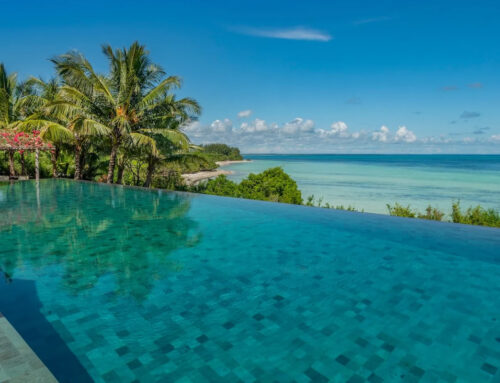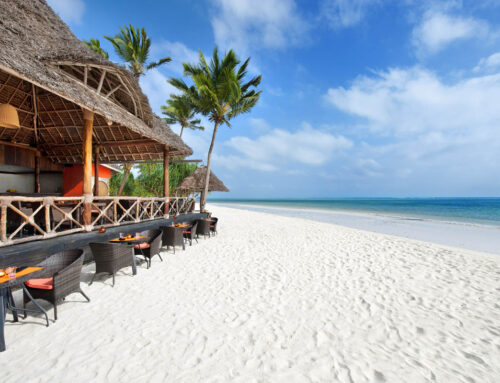Zanzibar is a treasure trove of history, offering visitors a glimpse into its rich cultural heritage and storied past. This enchanting island off the coast of Tanzania boasts numerous historical sites that tell the tales of its vibrant history. Here are the top 5 historical sites you must explore in Zanzibar.
Historical Sites to Explore in Zanzibar
Stone Town
- Overview of Stone Town: Stone Town, the historic heart of Zanzibar City, is a UNESCO World Heritage Site known for its winding alleys, bustling bazaars, and grand Arab houses. Its architecture reflects diverse cultural influences, including Swahili, Arab, Persian, Indian, and European elements.
- Must-See Attractions: In Stone Town, don’t miss the House of Wonders, the Sultan’s Palace, and the Old Fort. The House of Wonders, also known as Beit-al-Ajaib, was the first building in East Africa to have electricity and an elevator. The Sultan’s Palace, now a museum, offers insights into the island’s royal history. The Old Fort, built by the Portuguese in the 17th century, is the oldest building in Stone Town and a hub for cultural events.
- Cultural Insights: Exploring Stone Town gives you a deep understanding of Zanzibar’s complex history and its role as a major trading center. You’ll find a blend of African, Arab, and European cultures, each leaving its mark on the town’s architecture, cuisine, and daily life.
The Old Dispensary
- Architectural Marvel: The Old Dispensary, also known as the Ithnashiri Dispensary, is a stunning example of late 19th-century architecture in Stone Town. A wealthy Ismaili Indian merchant built it to serve as a charitable hospital.
- Historical Significance: This four-story building is a testament to Zanzibar’s diverse cultural influences, featuring ornate balconies, stained glass windows, and a blend of European and Swahili design elements. It played a crucial role in providing medical care to the local community during its early years.
- Current Use: Today, the Old Dispensary houses a cultural center and museum, offering exhibitions on Zanzibar’s history and culture. Visiting this site provides a deeper appreciation of the island’s architectural beauty and historical evolution.
The Slave Market
- A Dark Chapter in History: The Slave Market in Stone Town is a poignant reminder of Zanzibar’s role in the East African slave trade. This site was one of the largest slave markets in the world during the 19th century.
- Historical Exhibits: The Anglican Cathedral, built on the site of the former slave market, houses a museum that details the harrowing history of slavery in Zanzibar. You can visit the underground chambers where slaves were kept before being sold, offering a stark and moving experience.
- Memorials and Remembrance: A memorial sculpture outside the cathedral commemorates the suffering of the enslaved. Visiting this site is a sobering but essential experience to understand the island’s history and the resilience of its people.
The House of Wonders (Beit-al-Ajaib)
- Architectural Landmark: The House of Wonders, or Beit-al-Ajaib, is one of Stone Town’s most iconic buildings. Constructed in 1883 by Sultan Barghash, it was the first building in Zanzibar to have electricity and an elevator.
- Museum and Exhibits: This grand structure houses the Museum of History and Culture of Zanzibar and the Swahili Coast. The exhibits include traditional dhow boats, ceremonial attire, and historical artifacts, providing a comprehensive look at the island’s cultural heritage.
- Cultural Importance: The House of Wonders stands as a symbol of Zanzibar’s rich history and its connections to the broader Indian Ocean world. Its architectural grandeur and historical exhibits make it a must-visit site for anyone interested in the island’s past.
The Arab Fort (Ngome Kongwe)
- Historical Fortress: The Arab Fort, also known as Ngome Kongwe, is the oldest building in Stone Town, dating back to the late 17th century. It was constructed by Omani Arabs to defend against Portuguese invasions.
- Cultural Hub: Today, the fort serves as a cultural center, hosting the Zanzibar International Film Festival and various cultural events. Inside, you’ll find an amphitheater, souvenir shops, and a café, making it a vibrant hub for visitors and locals alike.
- Architectural Features: The fort’s thick walls, battlements, and arched doorways reflect its military origins. Exploring the fort offers a glimpse into Zanzibar’s turbulent history and its transformation into a center for arts and culture.
Zanzibar’s historical sites offer a fascinating journey through time, revealing the island’s rich and diverse heritage. From the bustling streets of Stone Town to the somber halls of the Slave Market, each site tells a unique story. Whether you’re a history enthusiast or a curious traveler, exploring these landmarks will deepen your understanding of Zanzibar’s past and its enduring cultural legacy.
FAQs
1. What is the significance of Stone Town in Zanzibar’s history?
Stone Town is the historic heart of Zanzibar City and a UNESCO World Heritage Site, known for its unique blend of architectural styles and its role as a major trading center.
2. Why is the Old Dispensary important?
The Old Dispensary is an architectural marvel that reflects Zanzibar’s cultural diversity and served as a charitable hospital in the late 19th century. Today, it houses a cultural center and museum.
3. What can visitors learn at the Slave Market site?
Visitors can learn about the harrowing history of the East African slave trade through exhibits at the Anglican Cathedral and the underground chambers where slaves were kept.
4. What makes the House of Wonders unique?
The House of Wonders was the first building in Zanzibar to have electricity and an elevator. It now houses the Museum of History and Culture of Zanzibar and the Swahili Coast.
5. How has the Arab Fort been repurposed?
The Arab Fort, originally built for defense, now serves as a cultural center, hosting events like the Zanzibar International Film Festival and offering a space for arts and culture.
For an unforgettable Tanzanian adventure, explore the following highlights on our site:
- Ruaha National Park
- Selous Game Reserve
- Serengeti National Park
- Ngorongoro Crater
- Kilimanjaro National Park
- Mikumi National Park
- Tarangire National Park
- Zanzibar Beach Tours
Visit our page for detailed information and tips to plan your perfect Tanzanian journey.






Leave A Comment